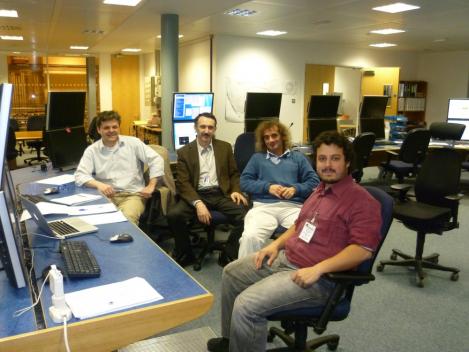Accelerator physicists working on the recently funded SuperB accelerator in Italy have been collaborating with Diamond’s and JAI's accelerator physicists to test new techniques for low emittance tuning, which can potentially benefit both Diamond and the SuperB.

The 300 million euro SuperB electron-positron collider project will extend by 100 times the production of B mesons, leading to new insights into the birth of the Universe, and complementing the high energy frontier machines such as the LHC.
Since the Italian Government made the funding announcement in December 2010, Pantaleo Raimondi, Head of the SuperB Accelerator project, has made several visits to Diamond and have run low emittance tuning tests during machine shifts.
Riccardo Bartolini, Diamond's Head of Accelerator Physics and JAI lecturer with a joint appointment in the University of Oxford, explains, “We are delighted to be working with the Super B project team on this accelerator development work. New techniques for low emittance tuning are of interest to us because they will help us to improve the performance of Diamond for all the scientific researchers who conduct experiments at the facility. The SuperB project is of great interest to the UK science community. Advances on both the detector and accelerator side are expected and there will be opportunities for UK scientists and companies to work on this flagship Italian science project.”
Andrei Seryi, Director of the John Adams Institute, also joined the Diamond shifts, and noted that “the design of the final focus system of SuperB was in large extend inspired by the designs developed for linear colliders. The final focus system as well as Machine Detector Interface can be one more area of JAI contribution to the project.”